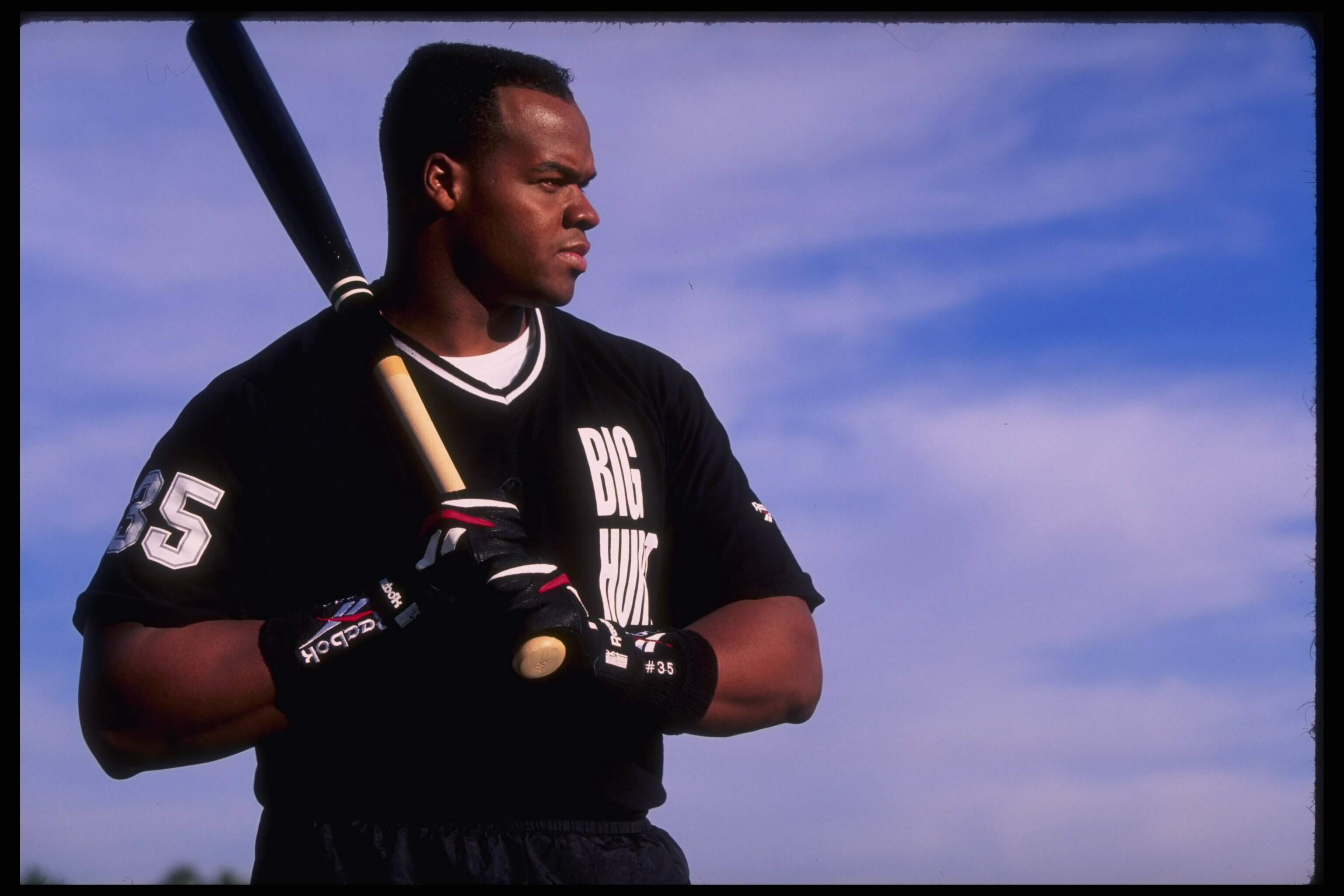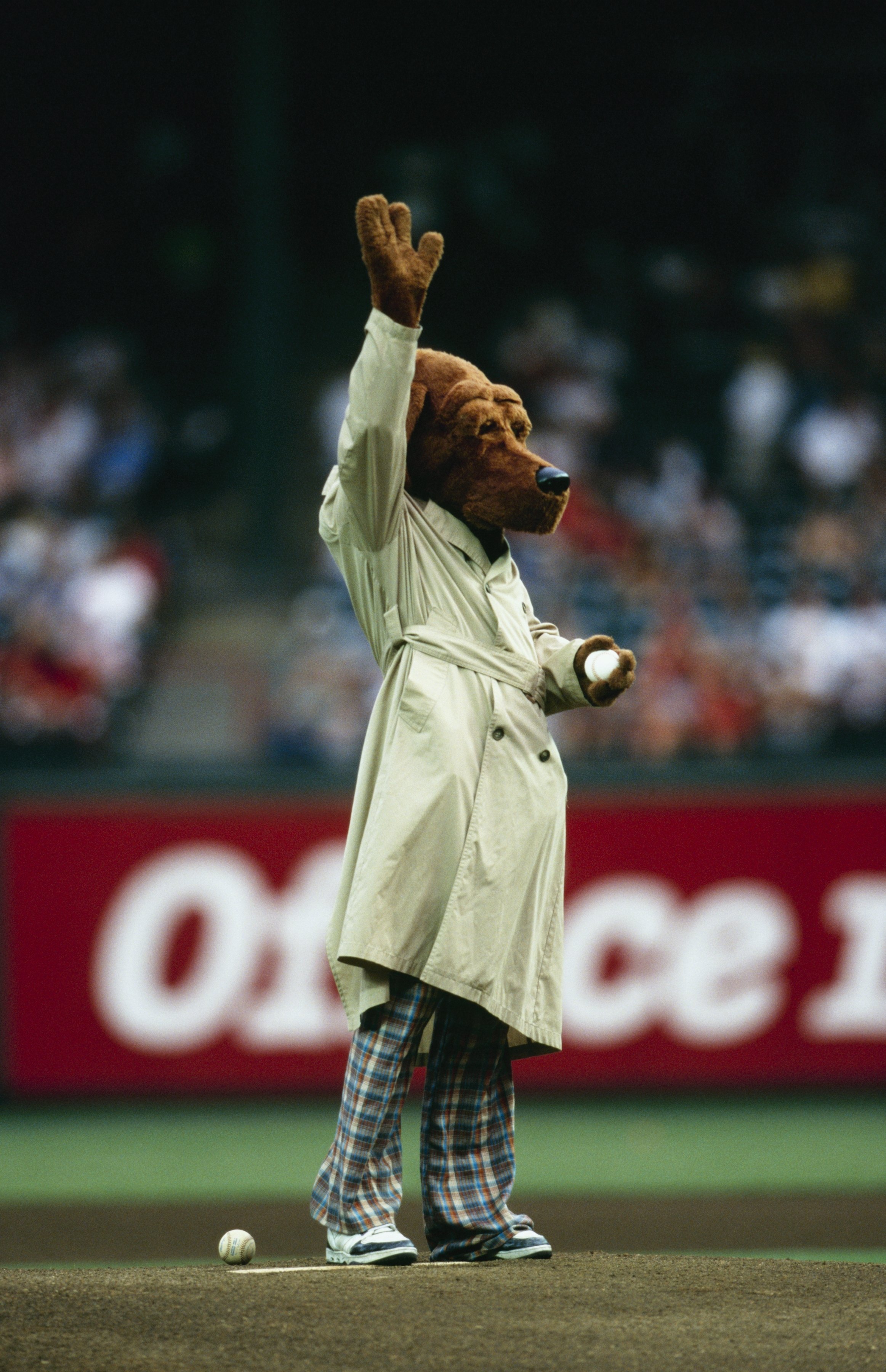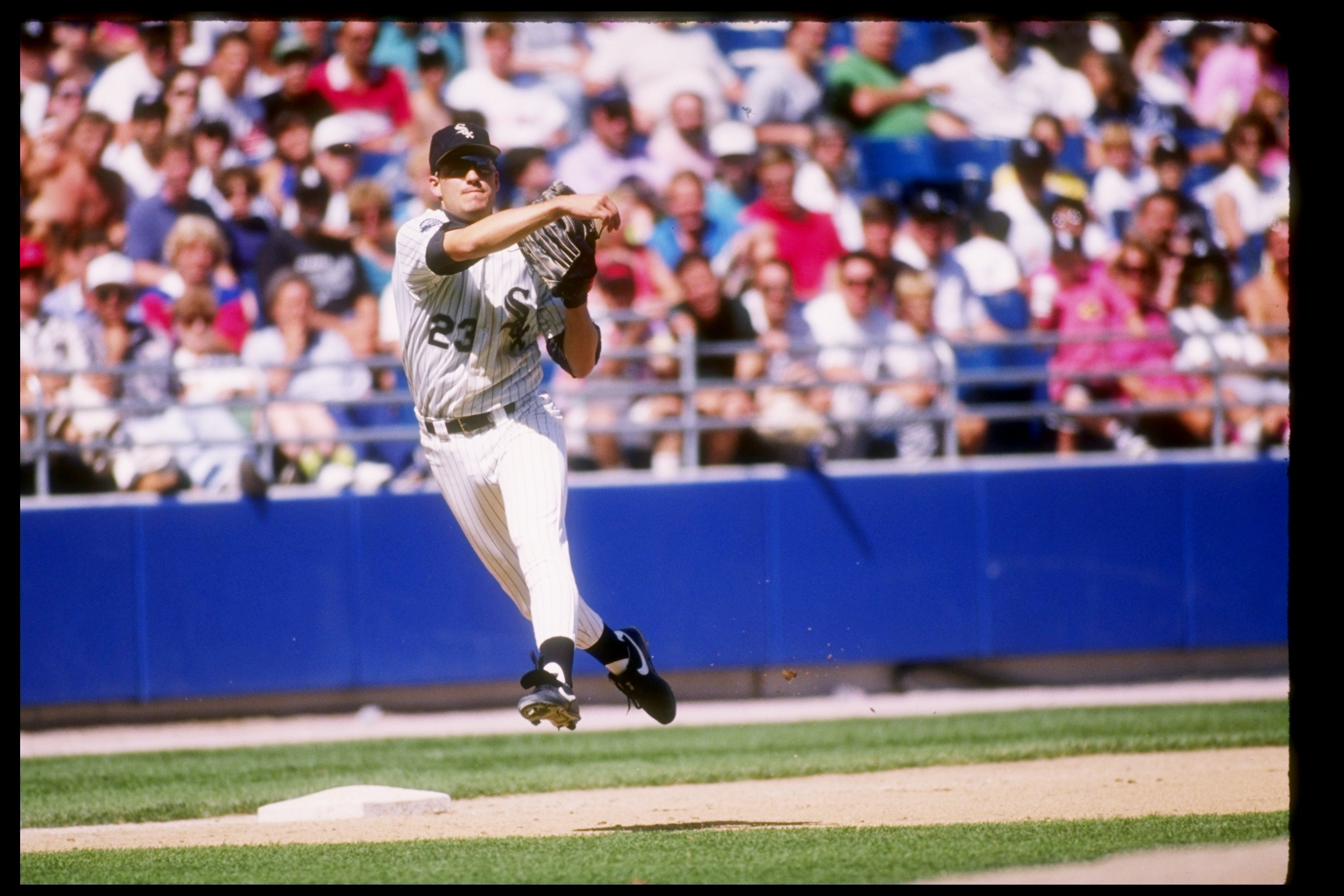Time was ticking away for Mike Bucek.
It was the year 1990 and the White Sox director of marketing had been put in charge of revamping the team logo and uniform designs. A tall task for a historic, century-old franchise.
As recounted in "Fitted in Black," since the early 1900s, the Sox had experimented with blue and red threads, collars and even, for some reason, shorts. But they needed something that would stick. Something cool. Something Chicago kids might take a second look at while shopping in a store. Something that would make new superstar players like Frank Thomas look ever more superstar-y.

"Our focus was to rebuild the franchise's fanbase in our home market," Bucek told me in a call.
So, with a final product due to MLB for approval soon, Bucek and his team had a sample that they thought worked pretty well ... but the Southside Chicago native had one more place he wanted to test it out. A place where he could get the opinion of real, salt-of-the-earth Sox fans. Face to face.
"There was a block party in this area I lived in called Tinley Park," Bucek said. "I brought the prototypes home with me. Thirty-plus years ago, this was the heart of White Sox Country. A lot of people had grown up Sox fans on the Southside and had moved out to these suburbs. This is where they were."

The July block party had been quite the event over the years.
There were moon bounces, various types of food, clowns, the local fire department and even appearances by one of the most famous Chicagoans of all time: McGruff the Crime Dog.

Bucek had to be strategic about how he would go about showing off the new uniforms to his neighbors. He couldn't simply walk around on the street, holding the jerseys up, asking people which one they liked more. He also didn't want to ask TV star McGruff for his opinion -- he seemed "too busy sweating in his heavy costume."
Bucek instead took the different styled hats and jerseys out of his suit bag and laid them out in his family room inside his home in Tinley Park.
He then went out to groups of two or three people who knew him and knew he worked for the White Sox.
"I would just say, 'Hey, I got something I wanna show you,'" Bucek told me. "'Why don't you come with me.'"
Once the people got inside to see what was going on, they couldn't believe their eyes: Here they were, at a neighborhood block party, getting to help choose a uniform design for their favorite baseball team.
"Yeah, they were pretty excited," Bucek recalled. "Almost everybody wanted to leave with the hat. I had to tell them, 'No no, this is a process. They're not ready yet.'"
The design nearly everyone at the party gravitated toward was the same one that Bucek, his team and other focus groups liked best: The simple, sleek silver, black and white. Old English style. Pinstriped shirts and pants.

"Most people, when you would talk to them before the samples about what they liked, they would always reference the White Sox uniforms from the '50s, '60s and '70s," Bucek said. "But they also felt like they couldn't just go back and wear the 1959 White Sox uniform. It was interesting -- people liked that look, but they weren't quite sure how you could reinvent it for the 1990s. We were able to update it and it still looked classic, but also a little different from those earlier ones. It was moving the brand forward, and certainly the new color combination took it to a different level."
The summer block party helped to confirm Bucek's months-long experiment: This set would be the one the team would wear on the field. And during the last homestand of the season at old Comiskey Park in 1990, they appeared. Fans, almost immediately, fell in love.
"The fans' demand to be able to share in our new look has been absolutely astonishing," White Sox owner Jerry Reinsdorf said at the time.
In 1991, with a full season of the uniforms, a brand new ballpark and a talented, young team -- the look took off.
"I got calls from people that whole first year who were looking for a fitted hat and couldn't find one because they were all sold out or there were just really cheap ones," Bucek remembered. "I heard from guys I went to grade school with who were looking for tickets and hats. It was pretty funny."
And then, to Bucek's and everybody's surprise, the new hats traveled to an entirely different popularity level. They caught the attention of some of pop culture's greatest influencers: Hip-Hop artists.
Ice Cube donned the cap in 1991's "Steady Mobbin" music video and began wearing it regularly during appearances.
"We grew up putting Old English style lettering on our clothes," Ice Cube said in the "Fitted in Black" documentary. "Ironing on letters in the Old English style. That style has always been a part of the street culture. ... [The White Sox cap] just spoke to me."
Dr. Dre famously sported it in the mega-hit, "Nothin but a G Thang." One of the most famous songs off one of the most famous albums ever.
The hats went from being the 18th-most sold in the league in 1990 to the third-most in '91. Only behind the A's and Yankees. New Era made 9,000 ChiSox hats in 1990 and an unbelievable 544,000 the following year.
It was a confluence of rappers, star players and a cool, fan-picked design that has kept the Sox hat popular for more than three decades.
"It just took off everywhere," Bucek said.
Although not the only place Bucek tested out the uniforms, the block party was a big part of the process.
"It was interesting that it was almost unanimous [at the party]," Bucek said. "We'd come back and report that, what, seven people, 13 people, 22 people, all liked the silver and black one."
Bucek was so consumed with his job and the pressure of delivering the new product that it was hard to appreciate the madness of the rebrand at the time. Now, long gone from his position in Chicago but still working as a consultant in the sports marketing industry, it's pretty fun to think about.
"When you're living through something like that, you do it and you're quickly onto the next thing," Bucek told me. "You're selling sponsorship, you're worried about the next promotion, you have a radio deal to cut. All these years later, though, you think, 'That was pretty cool.'"
